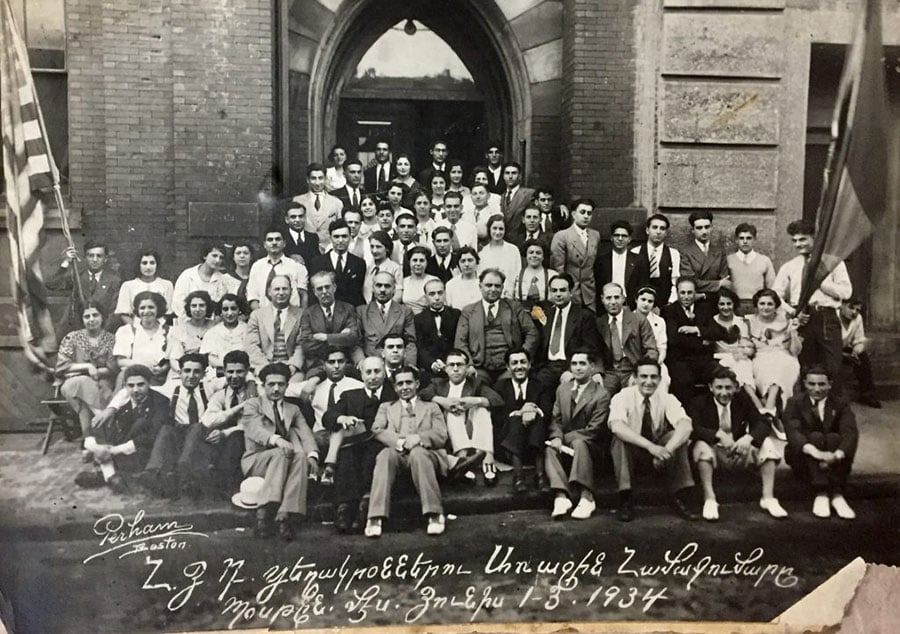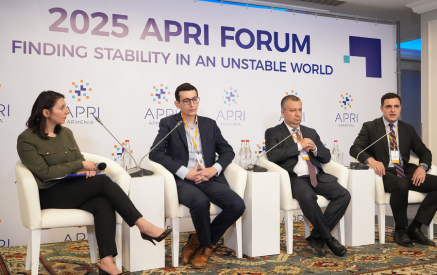My last few columns have been devoted to the concept of community. I felt the need to focus on this subject, because it is the critical manifestation of our identity as Armenians in the diaspora. For each of us, our introduction to our distinctness as Armenians comes from our family trees. Unlike the decision we all make in the diaspora relative to practicing our ethnicity, a family connection does not require a conscious choice. Along with DNA, we each receive our family as a result of our birth. There are varying degrees of family history and ethnic awareness in the Armenian diaspora, but our roots exist for our understanding. Whether we absorb its richness and carry it forward is a choice.
Many of us grew up in Armenian households where the culture, language and faith were practiced. Others may have experienced their ethnicity only through family gatherings or holidays. Similar to the independence from our families that we develop over time, if we choose to build a deeper identity with our heritage, it is usually a function of our connection to a communal identity.
The term “community” has become a catch-all for the church, AYF, ACYOA, AGBU, ARS and Knights of Vartan. The aggregation of individual practices in our communities builds influence, sustainability and prosperity. As we fast forward from the Genocide to 2024, this is a simple summation of the community in the diaspora…building identity through community.
Read also
Our community identity as American-Armenians is unique. With each side of the hyphenation, we approach communal identity differently. When Armenians socialize in regional or national gatherings, one of the first questions asked is telling: “Where are you from?” Although you may actually live in Cranston, Rhode Island, the answer will always be “Providence.” Someone from West Bloomfield, Michigan will answer respectfully, “Detroit.” Armenians from the D.C. area may reside in Maryland or Virginia, but will respond proudly, “Washington.” This is not geographic generalization, but rather a reflection of how we communally identify as Armenians in the diaspora. We have amazing geographic diversity and mobility, which add to the community identity. On the other hand, when these same individuals converse with other Americans, they may respond with Cranston, West Bloomfield or Alexandria.
When I was young, I would hear comments from my grandparents’ generation about community from a homeland perspective. Many of our original communities in the United States were settled by people from a common geography in Western Armenia. My own community of Indian Orchard was founded before the Genocide, mostly by men from the villages of Sepastia. Armenians at that time clustered based on family connections, geographic identity and employment. Even today, we have regions bolstered with Armenians from Baku who have instilled new life into their communities. While the survivor generation built community identity around migration patterns from a common geography, today Armenians use these city identifiers regardless of where they may actually reside. The Montreal Armenian community grew significantly with the arrival of immigrants in the late 1950s and early 1960s from Egypt. This had to do with political unrest, economic opportunity and emigration constraints.
Our challenge does not stop at the community level. When communities network into a global reach, the true capability of the diaspora is realized. Since most communities are a collective summation of organizations, the vertical integration of our institutions energizes a global capability. When an individual joins the Armenian church, they become a member of a parish and the greater Armenian church. Those individuals are connected to the parish through a series of democratic mechanisms that administer the parish and provide a connection to the church hierarchy. The parish elects delegates to participate in diocese (regional) church life. In turn, the diocese elects representatives to participate at the global church level via the Catholicosate. Similar networks exist for the ARF, AGBU, ARS and other organizations.
There are two important observations to make relative to these global structures. The first is the incredible identity and growth opportunity they afford individuals. All global leaders of the diaspora essentially came from local communities, and the mission is the beneficiary of their personal growth. To use a baseball analogy, our global community structure offers us a “farm system” from which talent can be developed and applied for optimal use. The second observation is that for each of us as individuals, there is always a higher purpose beyond ourselves. When we build identity through community, in its purest form, we are subordinating ourselves to a greater ideal. This is usually why we join in the first place but is tested when our own egos and values are challenged. This is the ideal state and is also the cause of many of our challenges. Communities are individuals wrapped together around a common purpose. They work optimally when all are focused on the greater mission. Anything else can become an unfortunate distraction. We have all experienced the joy of working together in community activity, where the process and results are so gratifying that there is an absence of fatigue. You are too happy to be tired, or if you are, it is with a smile on your face. Many of us have also experienced the tragedy of dysfunction caused by interpersonal challenges and the sadness of opportunities lost.
How often do we, as individuals, think of the implications of joining organizations and institutions from a subordination standpoint? Most of us in a moment of transparency will probably admit, not very often. Most of our feedback and opinions in community discourse is directed at everyone else. I was told years ago by a person I deeply respected that when you join a group, you should first hold up a mirror with humility and internalize the mission of the organization. We talk about this often in the church, because the mission is our salvation, and we are surrendering ourselves to Our Lord and Savior Jesus Christ. We are taught not to judge and to think of others. These worthy life values are difficult to practice, and we seem to forget them in the heat of the moment. When we realize that each mission has a higher calling, we may give pause to our shortcomings. I love when parish assemblies are held in the sanctuary and not in a fellowship hall. It reminds us of the civility and humility needed to work together.
Mentoring is an act of giving that can have tremendous impact and fits the higher calling model. As we age and gain wisdom, what can be more beneficial to sustainability than to transition authority to the next generation and participate in mentoring? For the diaspora, our higher calling has been supporting Armenia. When the diaspora understands the greater need of supporting the development of the homeland without expectations of control, then remarkable things happen.
Our communities are the pillars of the diaspora, but none are an endpoint. Each of our individual, organizational, regional and national responsibilities has a higher calling to respond to with passion. We should always be looking to expand impact with a common purpose. This is what defines our global nature. It is why Armenians seek each other, to continue that sense of community. Frankly, our communities have, at times, displayed a reluctance to comprehend the larger purpose of our work. We have displayed ample evidence over the years of being dedicated and generous but parochial. For some, the boundaries of commitment end with the local community. There are subtle but visible trust issues between local entities and the vertical hierarchy. We define our domains as our personal spheres of influence.
My parents told me the story of how my paternal grandparents met, courted and married. It was 1920 in Adana, Cilicia. Grandpa was a gamavor soldier who was stationed after the war in Cilicia as part of the occupation forces. My grandmother was a young woman native to Adana. They met, fell in love and wanted to marry. My grandfather was told by her father (my soon-to-be great-grandfather) that he did not wish for them to marry, because he was not Adanatzi but was from Sepastia. We had just lost 1.5 million souls to genocide, and being Armenian was not enough. Well, love conquered all, but the story still illustrates how we think at times.
Members of our churches display open distrust of diocesan level leadership. Most of the time, it occurs with little personal knowledge but due to an inherent bias. Certainly, different perspectives can generate these situations, but it would be far more effective to broaden our reach with support for hierarchy by building an understanding of a greater mission. It reflects the double edged sword of local pride and viewing the locale as an end unto itself. Where would the Armenian church in America be today if it had not established a diocese in 1899 and instead just opened independent parishes? How would the ARS operate without regional and international structures?
I am of the view that the establishment of the Republic of Armenia in 1991 has assisted the diaspora in addressing this chronic issue. There are thousands of diaspora Armenians who have redefined community identity with the added support of Armenia. All of us have had to learn how to think and act beyond our traditional boundaries.
None of the work that our fine organizations do in Armenia today existed 30 years ago. Building the infrastructure and programming to do so required nontraditional thinking. This has allowed the diaspora to realize that there is a greater cause, and with it, to establish new depth in our identity as Armenians. Our identities begin as individuals and mature in a community. The greatest and most rewarding challenge is to stretch our reach to connect our global existence.




























































